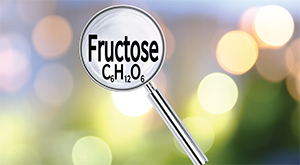
g0d4ather/shutterstock.com
When uric acid becomes elevated in the human body, a variety of problems can develop, most notably gout—a painful, inflammatory arthritis caused by uric acid crystal deposition in joints. Chronically elevated uric acid can also lead to painful kidney stones. The majority of patients found to have hyperuricemia, however, never go on to develop gout or nephrolithiasis, and unless tested, they would never know. Therefore, asymptomatic hyperuricemia is not considered a disease, and treatment has not been indicated. In the early 1980s, uric acid was removed from routine metabolic chemistry blood panels because of this.
Evidence is growing that chronically elevated serum uric acid can contribute to a variety of health problems, including type II diabetes, hypertension, vascular disease and chronic kidney disease. Treatment of hyperuricemia may therefore—at least theoretically—result in beneficial risk reduction for these diseases.
Pathophysiology, Diet & Evolution
In humans, uric acid is the end product of purine catabolism. Two-thirds of uric acid is derived endogenously from normal cell breakdown and one-third from dietary intake. Hyperuricemia is defined as a serum level >7.0 mg/dL. Uric acid elevation early in life (primary hyperuricemia) in most patients is due to decreased renal urate clearance and a smaller percentage from overproduction. The prevalence of hyperuricemia in adult men is 20–25% and much less (4–6%) in premenopausal women (thought to be due to estrogen-induced increased renal urate clearance).1 The prevalence of gout in these patients is only around 4%. The risk of developing gout depends on the duration and level of hyperuricemia. Levels >9.0 pose a significant risk.2
Hyperuricemia tends to begin around puberty, but clinical manifestations, if they do occur, take on average 20 years to develop.
Since the 1960s, the prevalence of both hyperuricemia and gout has more than doubled.3 During this same period, the incidence of type II diabetes, metabolic syndrome and obesity has similarly increased.4 These increases are likely related to lifestyle and dietary factors, including inactivity, obesity, sugars (particularly fructose) and purine-rich fatty food.5
The intake of added sugars to the Western diet, particularly table sugar and high-fructose corn syrup, has greatly increased in the past hundred years. Metabolic syndrome is characterized by hyperglycemia, dyslipidemia and hypertension and its clinical consequence of insulin resistance. Fructose is a major component of added sugars, and its consumption has been directly linked to hyperuricemia and metabolic syndrome.6 Increased dietary intake of such sugars can lead to fat production and obesity.

